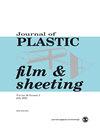来自编辑
IF 1.5
4区 材料科学
Q3 MATERIALS SCIENCE, COATINGS & FILMS
引用次数: 0
摘要
编者:虽然食品、药品、药品和许多其他消费品的成分受到政府的严格监管,但令人惊讶的是,烟草产品却没有。自1967年以来,香烟的焦油和尼古丁含量逐渐出现在烟盒和广告上,但并非普遍如此。这些数字被用来证明描述性广告中“清淡”和“温和”等术语的合理性。1981年,一份美国公共卫生报告得出结论:“大量科学证据有力地表明,香烟中的焦油和尼古丁含量越低,对人体的危害就越小。”一些早期的报告似乎得出结论,肺癌死亡率的下降可归因于吸低焦油香烟,尽管最近的数据表明,吸“低焦油”香烟与吸“普通”香烟的长期结果几乎没有任何差异。此外,与鳞状癌相比,腺癌的发病率有所增加,女性比男性更明显,这可能是由于香烟中烟草特异性亚硝胺的增加,以及与现代香烟相关的更强烈(代偿性)吸烟和更深程度的吸入造成的。我们决定测试三个全球品牌(骆驼、好彩和万宝路)的焦油和尼古丁产量的一致性,以及两种烟草特有的亚硝胺,4(甲基亚硝胺)1(3-吡啶基)1丁酮(NNK)和n -亚硝基烟碱(NNN)。前者是一种强大的肺腺致癌物,无论给药途径如何,后者是动物食道癌。所使用的方法已由HoVmann描述。这些香烟是由志愿者(国际香烟变异组)在29个国家购买的,他们购买的是现有的优质香烟,在大多数情况下是过滤的。没有购买“淡”、“温和”、“薄荷”或其他变体。莫斯科致癌研究所对每种品牌的40支香烟进行了分析。并非每个国家都能买到所有的品牌,也不知道购买的是当地生产的、进口的还是走私的,也不知道它们在销售前储存了多长时间。这不是一个具有代表性的样本——香烟是由街上的人购买的。我们的目的是调查国际差异。焦油和尼古丁的测试结果并不显著。一般来说,它们符合包语句(如果存在)。“骆驼”香烟的焦油产率为10.6 ~ 15.7 mg/支,“好彩”香烟为11.8 ~ 20.4 mg/支,万宝路香烟为8.4 ~ 15.9 mg/支。“骆驼”和“好彩”香烟的尼古丁产量为0.85 ~ 1.3毫克/支,万宝路香烟的尼古丁产量为0.68 ~ 1.25毫克/支。亚硝胺产量差异很大。骆驼的NNK的最低和最高产量之间存在三倍的差异,好彩的差异为五倍,万宝路的差异为九倍(图1)。NNK和NNN的产量高度相关(相关性0.88,95%置信区间0.83至0.93),因此图中只显示了NNK。我们已经证明,在没有任何警告的情况下,在有商标和全球广告的产品中,致癌物剂量可以有三到九倍的变化。1998年,我们中的一些人建议通过建立市场中位数作为初始上限来设定这些致癌物的上限。显然,亚硝胺含量较低的卷烟可以而且已经生产出来了,没有理由在这里描述的不同品牌之间存在广泛的差异。我们认为这些结果是政府对香烟中致癌物浓度进行监管的一个令人信服和紧迫的论据。显然,这样的监管应该超越致癌物,延伸到其他有毒的、可改变的物质,包括尼古丁。本文章由计算机程序翻译,如有差异,请以英文原文为准。
From the Editor
EDITOR,—While the content of food, pharmaceutical products, drugs, and many other consumer goods are tightly regulated by governments, tobacco products, surprisingly, are not. Tar and nicotine yields of cigarettes have progressively, but not universally, appeared on cigarette packets and advertising since 1967. These figures have been used to justify terms such as “light” and “mild” in descriptive advertising. In 1981 a US public health report concluded: “the preponderance of scientific evidence strongly suggests that the lower the “tar” and nicotine content of the cigarette, the less harmful would be the eVect.” Some early reports concluded, plausibly, that a decrease in lung cancer mortality could be ascribed to smoking reduced tar cigarettes, although more recent data suggest that there is little if any diVerence in the long term outcome of smoking “low tar” as against “regular” cigarettes. Further there has been an increase in adenocarcinoma relative to squamous carcinoma, more pronounced in women than men, and this may be caused by the increases in tobacco specific nitrosamines in cigarettes plus more intense (compensatory) smoking and deeper inhalation associated with modern cigarettes. 4 We decided to test three global brands (Camel, Lucky Strike, and Marlboro) for consistency of tar and nicotine yields and for two tobacco specific nitrosamines, 4 (methylnitrosamino) 1 (3-pyridyl) 1 butanone (NNK), and N-nitrosonornicotin (NNN). The former is a powerful lung adenocarcinogen, regardless of route of administration, and the latter is an established oesophageal carcinogen in animals. The methods used have been described by HoVmann. 6 The cigarettes were purchased in 29 countries by volunteers (the International Cigarette Variation Group), who purchased the premium example available, which were, in most cases, filtered. No “light”, “mild”, “menthol” or other variants were purchased. Forty cigarettes of each brand were analysed at the Institute of Carcinogenesis in Moscow. Not all brands were available in each country and it is not known whether those purchased were locally produced, imported or smuggled, or how long they had been stored before sale. This is not a representative sample—the cigarettes were acquired as they would be by the person in the street. Our aim was to investigate international variation. The results of the tar and nicotine testing were unremarkable. Generally they conformed to the packet statement (where present). Tar yield ranged from 10.6 mg/cig to 15.7 mg/cig for Camel, 11.8 mg/cig to 20.4 mg/cig for Lucky Strike, and 8.4 mg/cig to 15.9 mg/cig for Marlboro. Nicotine yield ranged from 0.85 mg/cig to 1.3 mg/cig for Camel and Lucky Strike, and 0.68 mg/cig to 1.25 mg/cig for Marlboro. DiVerences in nitrosamine yields were substantial. There is a threefold diVerence between the lowest and highest yields of NNK for Camel, a fivefold diVerence for Lucky Strike, and ninefold for Marlboro (fig 1). NNK and NNN yields are highly correlated (correlation 0.88, 95% confidence interval 0.83 to 0.93), so only NNK is shown in the figure. We have shown that a threeto ninefold variation in carcinogen dose can be given to the smoker, without any warning, in products that are trademarked and globally advertised. In 1998 some of us proposed the setting of upper limits on such carcinogens by establishing the market median as an initial upper limit. Clearly lower nitrosamine cigarettes can be, and are, produced, and there is no excuse for the wide, within brand, variations described here. We see these results as a compelling and urgent argument for government regulation of carcinogen concentrations in cigarettes. Obviously such regulation should go beyond carcinogens to other toxic, modifiable substances, and to nicotine.
求助全文
通过发布文献求助,成功后即可免费获取论文全文。
去求助
来源期刊

Journal of Plastic Film & Sheeting
工程技术-材料科学:膜
CiteScore
6.00
自引率
16.10%
发文量
33
审稿时长
>12 weeks
期刊介绍:
The Journal of Plastic Film and Sheeting improves communication concerning plastic film and sheeting with major emphasis on the propogation of knowledge which will serve to advance the science and technology of these products and thus better serve industry and the ultimate consumer. The journal reports on the wide variety of advances that are rapidly taking place in the technology of plastic film and sheeting. This journal is a member of the Committee on Publication Ethics (COPE).
 求助内容:
求助内容: 应助结果提醒方式:
应助结果提醒方式:


